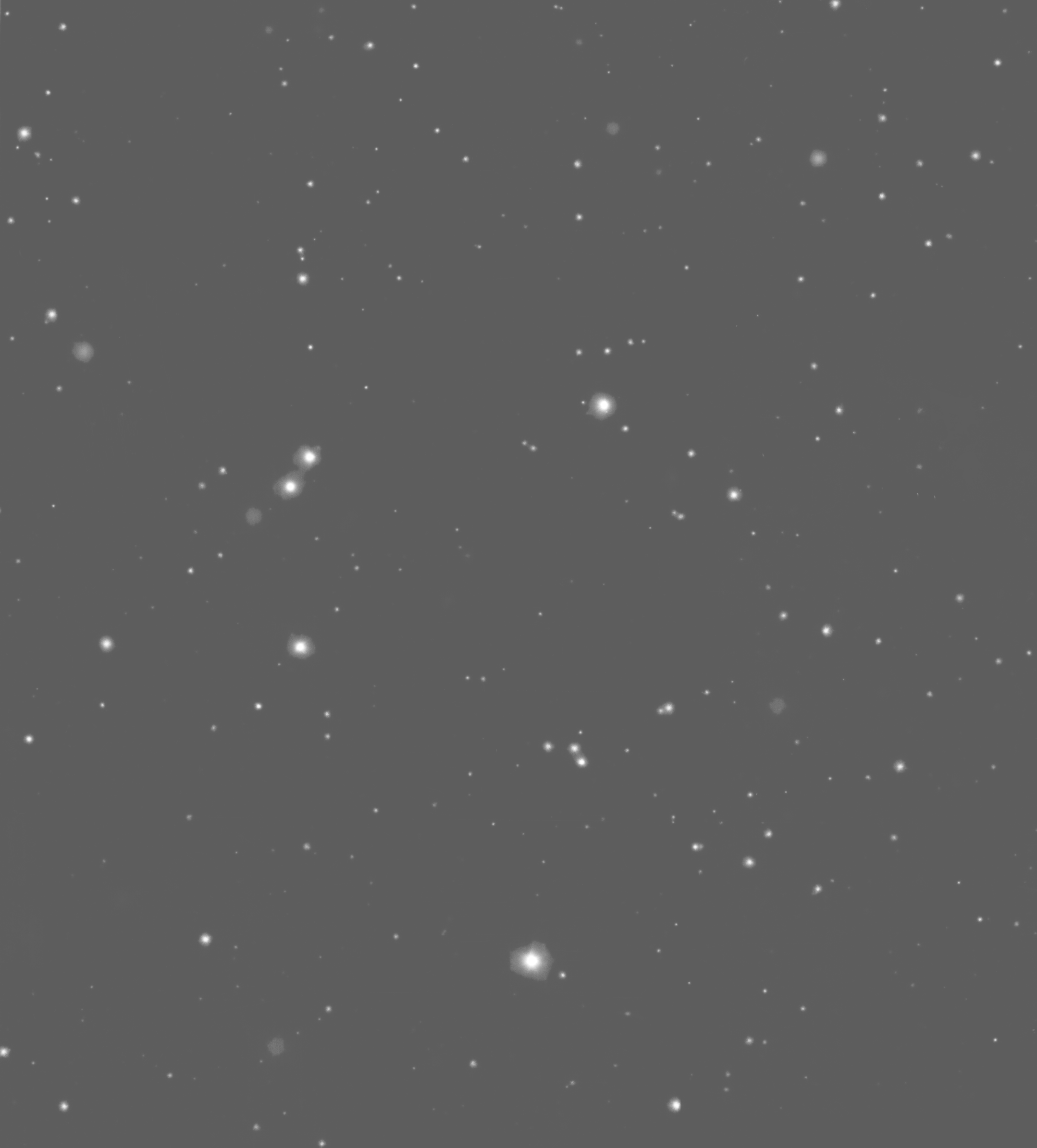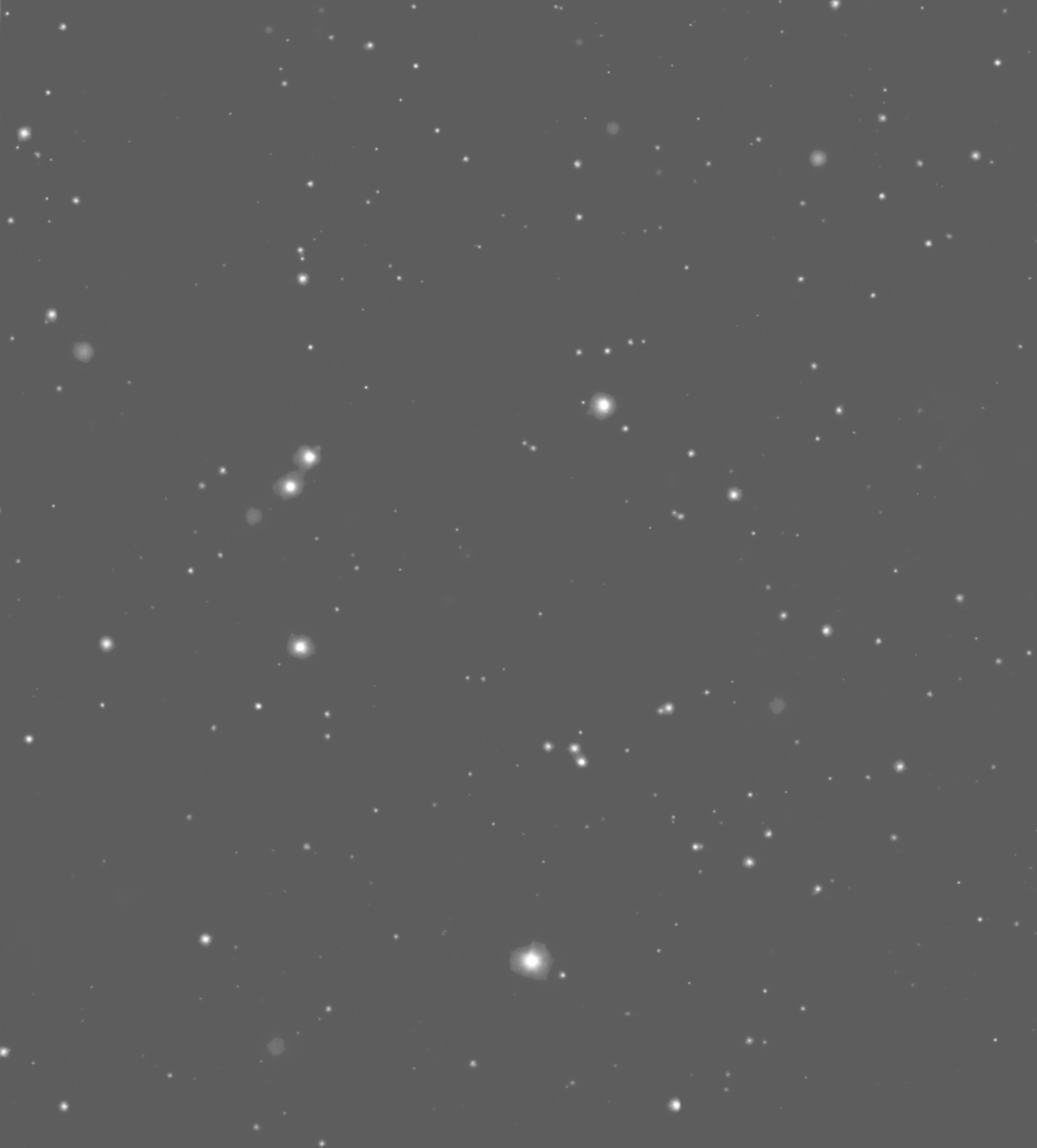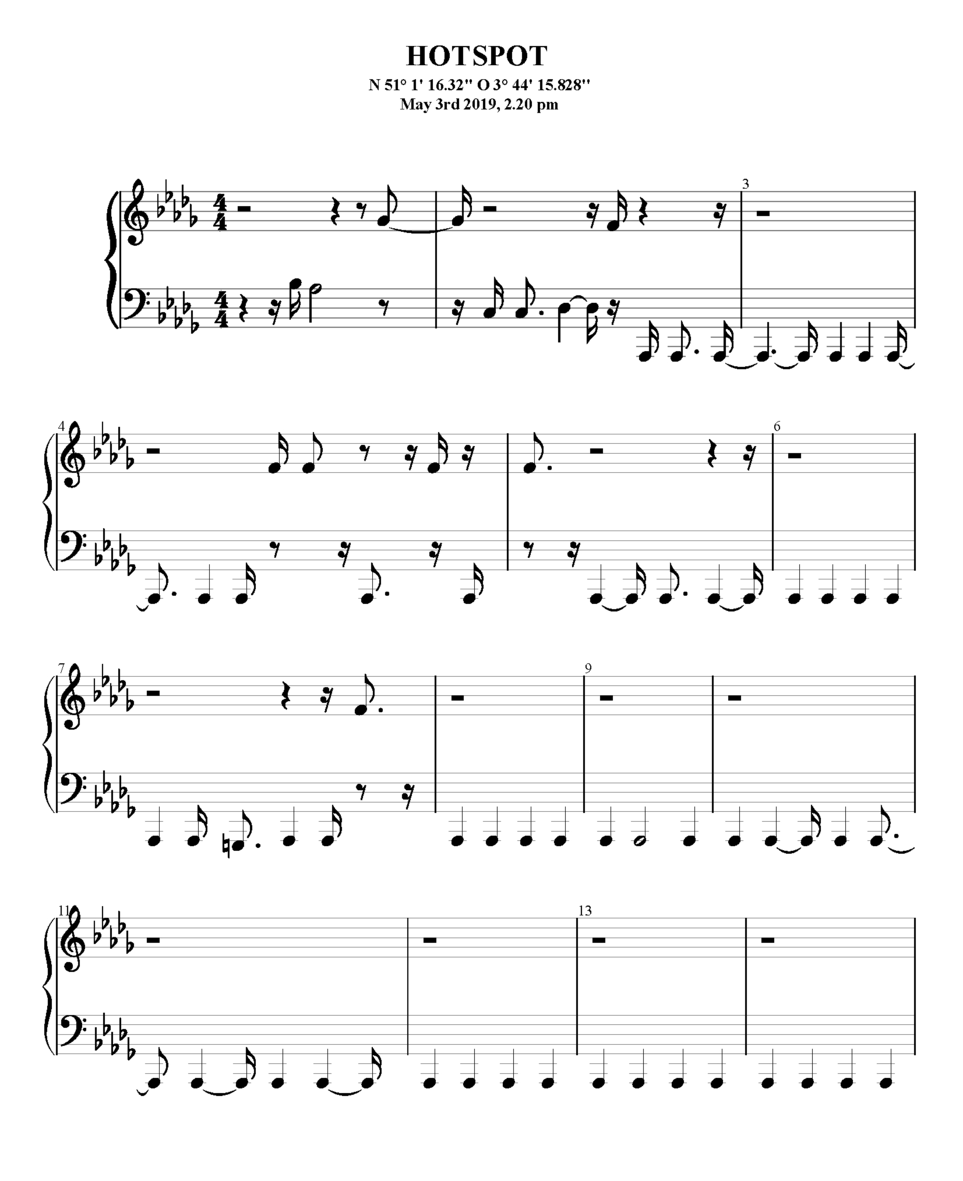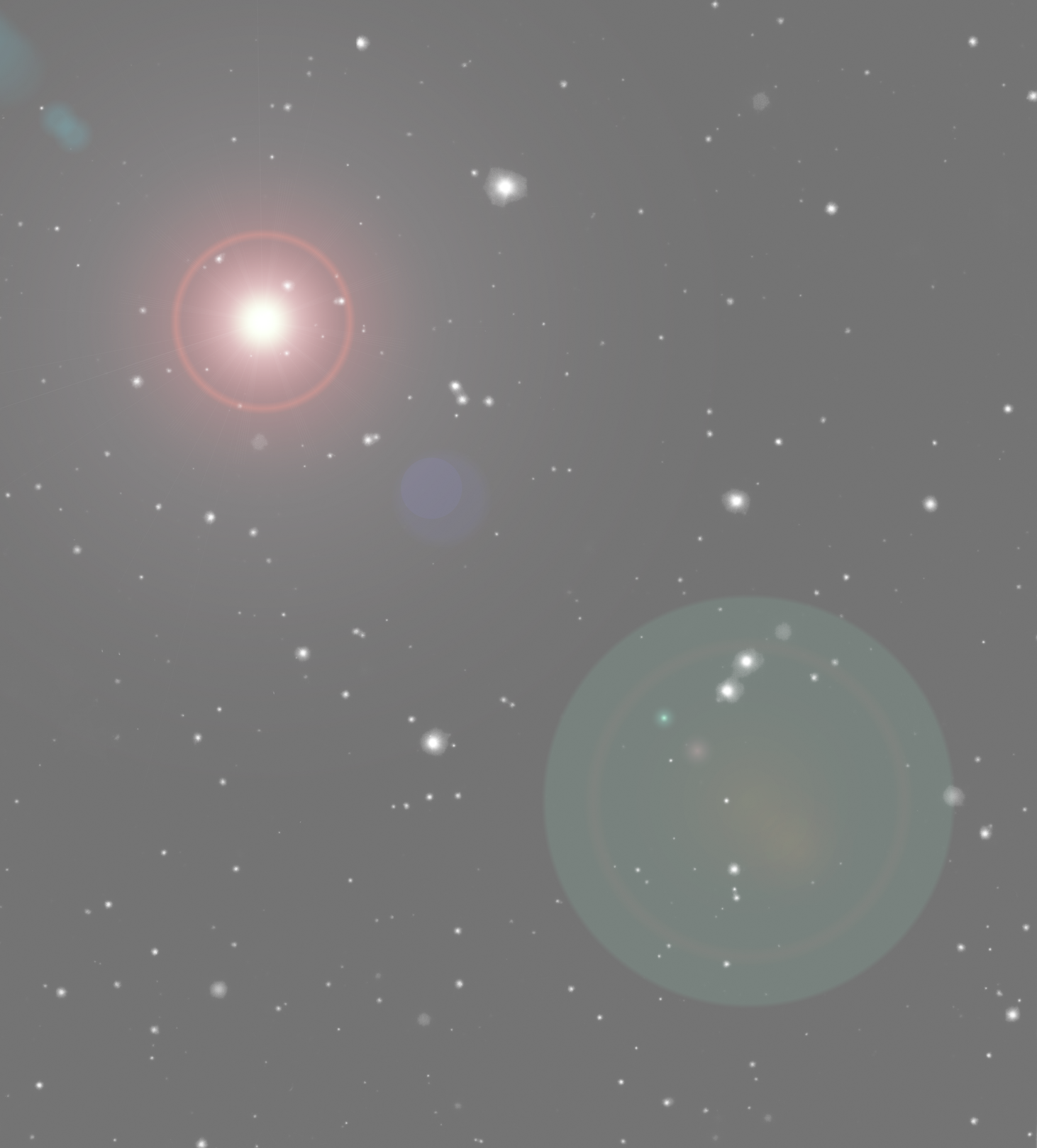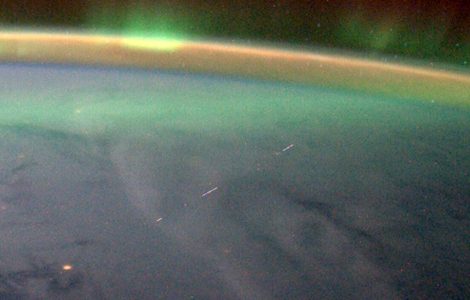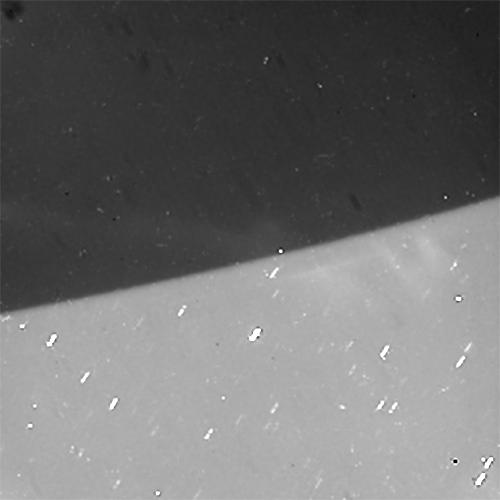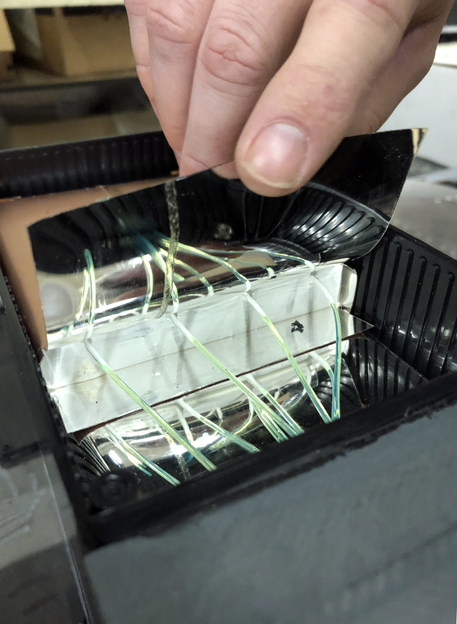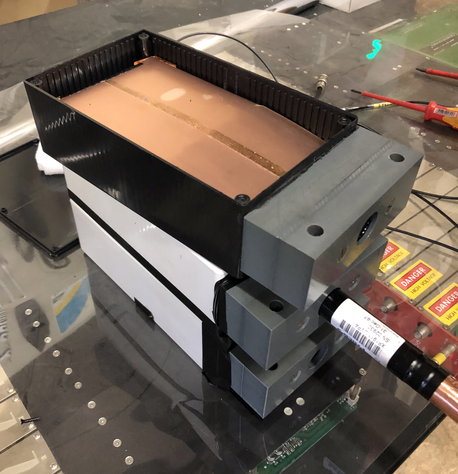4.2. Hotspot
Through the sonification of cosmic rays, the work Hotspot (2019 [fig. 30, 33, 34]) aims to make exhibition visitors aware of the constant invisible background radiation surrounding us, of an unknown aspect of the universe that is not detectable by the unaided human sensorium. Interstellar space contains a permanent flux of high-energy elementary particles called cosmic rays, travelling at the speed of light and originating from distant supernovas. When colliding with the earth's atmosphere, cosmic rays create showers of secondary particles. Although they are partly absorbed by the atmosphere, these showers induce a large range of phenomena, the main one being a flux of muons. These heavy electrons, which are not present in usual matter because of their short lifespan, are produced at a high rate in cosmic showers. Because of their excellent penetration capacities, muons are able to reach the earth's surface. Human beings, however, are unaware of these cosmic particles crossing their body.
What follows is a short description of the technical setup used to create Hotspot. Two detector arrays were each composed of a photomultiplier tube combined with a slat of plastic scintillator – a luminescent material that, when struck by an incoming muon, absorbs its energy and re-emits this energy in the form of light. A particle passing through the scintillators triggered the emission of some of the photons it contains. These photons were then guided along the scintillators by an optic fibre cable until they reached the photomultiplier tube, which generated an electrical impulse [fig. 31, 32]. Parasitic noise from natural terrestrial radioactivity was eliminated because muons travel at a similar speed to that of light, and therefore cross almost simultaneously. When a muon hit both photosensitive detectors at the same time, a threshold that separates background noise from pulse was applied to clean up the received signal. Only when the input signal from both photodetectors surpassed the installed threshold was a block pulse generated as output. This negative pulse needed to be converted to a positive voltage of maximum 5V for the Arduino microcontroller to be able to read it. A fast data acquisition program then checked whether or not a signal hit the Arduino pin, saving the interval between two impacting muons. Each interval was assigned a specific tonal value, which the microcontroller sent as an analogue pulse to an audio driver that amplified the signal before transmitting it as a MIDI format to a loudspeaker. Every sent pulse had the same length of 300 milliseconds: the only variation was the interval between, and the frequency of, the notes.
The test network described here was installed for the period of the Harbinger exhibition in one of the greenhouses of Ghent University’s Botanical Garden. In real time, it translated the ambient cosmic ray activity into sound, broadcast through an outdoor garden loudspeaker [fig. 33, 34]. The title of the work, Hotspot, not only refers to a radiation hotspot in orbit, a place where the flux of cosmic rays is 10 to 100 times greater than the rest of the orbital path, but also to the hotspot's definition as 1. the place to be, a tourist attraction; 2. a place of significant activity, danger, or violence; 3. a public place where a wireless signal is made available. I decided to show the underlying, specialized technology necessary to create the soundscape, while the listeners can experience the physical phenomenon itself. This added to the surprising and at the same time humorous effect of the installation, as there is a large discrepancy between the high-tech part of the work and the deadpan sound it produces, resembling the popping of corn.
Several sound recordings were made in the course of the project [fig. 35] and later converted into sheet music scores [fig. 36]. I also ran a recording through a photosounder software program to create a visual output of the captured cosmic radiation, which was printed on a strip of photo paper 7.25 cm by 585 cm in size [fig. 37]. The different versions of Hotspot illustrate that each image-making framework prescribes how we (can) visualise the world, in the sense that it also constructs and interprets reality in a preconditioned way.
Asymptotic Freedom and Hotspot raise similar questions about the ways the unseen image-making forces of light work on our media and on our perception. How can the existence and behaviour of the tiniest components of matter be made observable and visible? What kind of phenomenology are we talking about here? And in what way do artificial methods of making manifest come into play as a modus operandi in the specialised fields of science? While Asymptotic Freedom and Hotspot embody organic and cosmic events that have been around since the Big Bang, they are also inextricably linked to an elaborate man-made dispositif. This paradox lies at the heart of particle physics, which seeks to find answers to the ways in which our world is organised by studying what the elementary constituents of matter and radiation are, and which forces or interactions determine their behaviour.
The natural radioactive properties of the earth and the universe can only be made detectable and measurable by means of the high-technological apparatuses of nuclear science. It is important to note here that particle physics is in fact a high energy physics, because many researched elementary particles do not occur under normal circumstances in nature; they can only be created during energetic interactions or collisions with other particles – set in motion by the flash of a powerful beam of light. Such events are triggered in CERN's particle accelerators. Artificially provoking behaviour of matter operating far beyond human sensation, these experiments continuously re(de)fine the radius of what is 'observable' by means of increasingly sophisticated instruments and by putting speculative theories about the existence and behaviour of subatomic elements to the test.
What Asymptotic Freedom and Hotspot also aim to address is that both art and science develop certain models and mechanisms of representation that translate the invisible over the sensible into an intellectual understanding of the world, not unlike religious acheiropoietic imagery does. To build sophisticated optical apparatuses and program them implies a methodology for what and how to observe and show. In particle physics, these allegedly unbiased procedures are stretched to the limit: here, phenomena that are entirely invisible to the human eye are somehow rendered into graspable information, which is in essence an aesthetic procedure. Images of colliding particles or cosmic rays belong to a level of reality that goes beyond our perceptive capacities and are therefore fundamentally fictional. They only exist by the grace of the technical processes through which they are produced, and illustrate that visualizing with photography cannot simply be regarded as a straightforward form of mechanical observation. It is never merely a case of making visible what was previously invisible, for dozens of small decisions go into the process of visualisation and impinge on the final shape of the output.
Furthermore, in Asymptotic Freedom and Hotspot, the visible is not a matter of real presence or likeness. One could even explicate that their visual existence is purely a matter of mediation processes, as the act of making manifest relies here on media-forms that are entirely detached from our agency and senses. Nature itself must be imagined and thought through. And photography – of and by the flash of light – acts as a form of science fiction.
While my exploration of cosmic rays and the behaviour of elementary particles certainly expands on current artistic research into nuclear visuality such as that of Susanne Kriemann and Susan Schuppli, it was initially sparked when I read about untriggered flash sightings witnessed by astronauts in space. Since the first space missions, astronauts have reported seeing flashes while they were in orbit, even when their eyes were closed. Both Neil Armstrong and Buzz Aldrin witnessed strange flashes of multiple shapes and dimensions during the Apollo 11 mission in 1969. Apollo 15 commander David Scott described one flash observation as 'resembling a photographic flashbulb that has been flashed across a dark arena.'5 International Space Station crewmember Jeff Hoffman recalled lying in his sleeping bag when, 'zap-zap-zap,'6 one of the best light shows he had ever seen erupted in the retinas of his closed eyes. The experience of 'seeing things that aren’t there' when in space, is quite poetically described by ISS-astronaut Don Pettit:
'Flashes in my eyes, like luminous dancing fairies, give a subtle display of light that is easy to overlook when I’m consumed by normal tasks. But in the dark confines of my sleep station, with the droopy eyelids of pending sleep, I see the flashing fairies. As I drift off, I wonder how many can dance on the head of an orbital pin.'7
The repeated sightings of untriggered light flashes by astronauts who took part in Apollo 11, 12 and 13, led to subsequent missions including experiments specifically designed to explore this strange phenomenon. It was determined that what the astronauts were actually seeing were cosmic rays zapping through the retina and optic nerve of their eyes. The lion's share of cosmic radiation aiming for Earth is absorbed by our atmosphere, thus protecting us from being hit by an alarming amount of potentially deadly radiation. Yet, the situation in space is different. Free from the protection offered by the atmosphere, cosmic rays incessantly bombard everyone or everything crossing their path, as is the case on board the International Space Station for example. They cause 'such mischief as locking up our laptop computers and knocking pixels out of whack in our cameras. The computers recover with a reboot; the cameras suffer permanent damage. After about a year, the images they produce look like they are covered with electronic snow.'8 They also have free rein to pass through a (closed) eye, — causing rods and cones to fire and resulting in the perception of a flash of light that is not really there.
fig. 33, 34, 35. Dominique Somers, Hotspot installation and sound fragment, Ghent University’s Botanical Garden, July 2019
fig. 39. NASA, Random bright specks appear in this exposure of Saturn's south
pole due to cosmic rays hitting the camera detector of the Cassini probe, 2017

